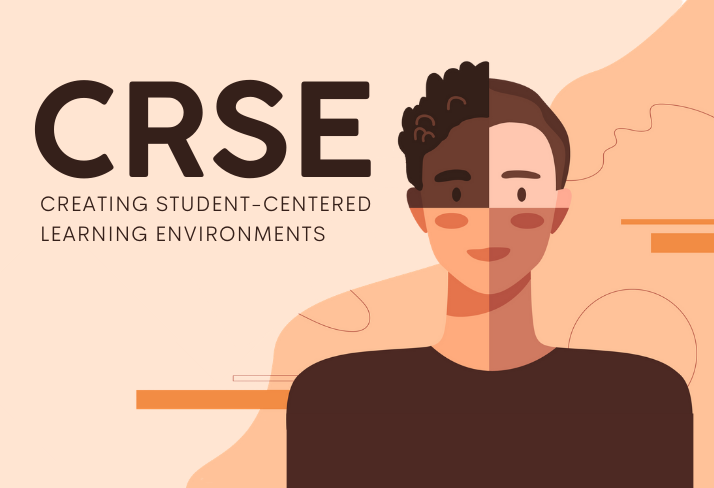|
Encourage curiosity and caring in young learners, and support an understanding and appreciation of differences.
Conversations about race are not easy. They can bring about feelings of fear, anger, and frustration, and as a result, these conversations are often avoided. However, grappling with topics of race and diversity are truly important, especially with young children who are cultivating their understanding and their perceptions of the world. Experts argue that children are never too young to learn about kindness, fairness, and human rights. Research states that children “as young as three months old...may look differently at people who look like or don’t look like their primary caregivers.”
As a parent of a soon to be two-year-old and a professional development consultant who works closely with educators of young children, I am committed to seeking ways to engage in and facilitate my own conversations about race, especially in today’s world, as well as share strategies with educators that they can use in their own classrooms. What follows are a few strategies I’ve curated and adapted from my own musings and readings, as well as some concrete strategies inspired by one of our reimagining education initiatives: Literacy Unbound. These strategies can be particularly helpful when it comes to facilitating conversations about race with young students and cultivating skills, mindsets, and capacities that will serve us well today, and in the future.
The importance of asking questions
One of the most effective ways to grapple with topics of race and diversity is to ask questions. This is particularly effective with elementary students, as they commonly ask many questions of their own. By encouraging their curiosity and caring, and creating a safe space for them to be inquisitive, you can help pacify concerns, address confusions, and support an understanding and appreciation of differences. Additionally, you can raise your own questions focused on topics of race, diversity, and exploring differences to get students thinking and recognizing how they can be advocates of positive change. Here are some examples of questions that I turn to, curated and adapted from websites like PBS.com:
These questions can be a part of morning circle time, a weekly reflection or journal writing prompt, or even as a theme for a bulletin board, where students can share their responses using post-its or index cards (or, while online, students can add their thoughts online to Padlets and Jamboards).
Introducing & exposing students to diverse books
As Dr. Aisha White, Director of the P.R.I.D.E. Program at the University of Pittsburgh, explains, books — especially picture books — are a safe place to start when talking to children about race and racism. She suggests selecting picture books that offer multiple perspectives and explore various entry points for addressing complex topics. Some popular texts she suggests include:
These texts can be read as part of designated read aloud time, as part of a school-wide, character building initiative where the books are read in every classroom, or as a central text that guides and inspires a larger unit of study. But as Dr. White explains, it’s not enough to just read the book. “If a parent (or educator) just reads the book and doesn’t have a conversation — doesn’t start to talk about racial disparities and racial discrimination and racism in America — then it won’t really affect a child’s attitudes toward race…it comes back to…having a background knowledge before speaking with their children, and being brave enough to have the tough conversations.” What does it look like to support students in reading complex texts more closely, more carefully, more creatively, and more critically?
Sparking conversations around texts
Literacy Unbound, one of our signature initiatives, aims to unbind traditional approaches to the teaching of reading and writing using drama and play-based strategies to spark conversations that are inspired by questions raised in a specific, shared text. Teachers and students are brought together in this process as critical and creative thinkers, which helps foster a space for collective inquiry and exploration. Using drama and play can be particularly effective with young students, especially when looking to support engagement and participation, while also providing a safe entry point for complex and challenging conversations. Let’s look at a few strategies from Literacy Unbound to see how they can be effective and what they can look like when applied to one of my favorite texts, The Other Side, by Jacqueline Woodson. The Other Side follows the story of a little Black girl named Clover who sees a little white girl across a fence, but is told by her mom that she can’t cross to the other side of the fence because it isn’t safe.
Facilitating conversations about race with young students is no easy task. It takes courage, patience, and a lot of thoughtful planning and reflection on the part of educators, parents, and caretakers. Moreover, it takes a lot of persistence. Being open-minded and developing understanding, kindness, and an appreciation of others who are different from us is not something that happens after reading one text or engaging in one conversation.
As Glenn Singleton and Curtis Linton note in their book Courageous Conversations About Race: A Field Guide for Achieving Equity in Schools, courageous conversations about race require that we stay engaged and anticipate feelings of discomfort, as well as expect and accept non-closure. We encourage you to create space for these conversations with your students and reimagine the ways in which you can spark curiosity and critical thinking around race and equity in a safe and supportive classroom. |
|
The Center for Professional Education of Teachers (CPET) at Teachers College, Columbia University is committed to making excellent and equitable education accessible worldwide. CPET unites theory and practice to promote transformational change. We design innovative projects, cultivate sustainable partnerships, and conduct research through direct and online services to youth and educators. Grounded in adult learning theories, our six core principles structure our customized approach and expand the capacities of educators around the world.
|
ABOUT US
525 West 120th Street, Box 182 New York, NY 10027 416 Zankel Ph: (212) 678-3161 [email protected] Our Team Career Opportunities |
RESOURCES
Professional Articles Ready-to-Use Resources Teaching Today Podcast Upcoming PD Opportunities |
COACHING SERVICES
Custom Coaching Global Learning Alliance Literacy Unbound New Teacher Network Student Press Initiative |
























